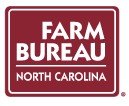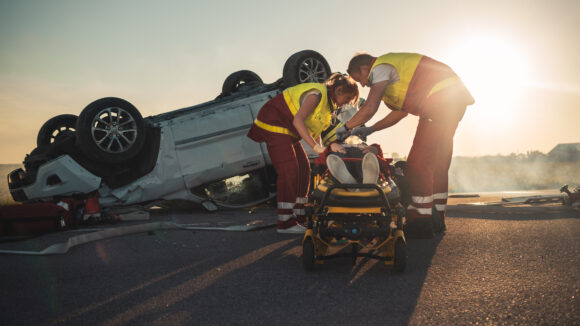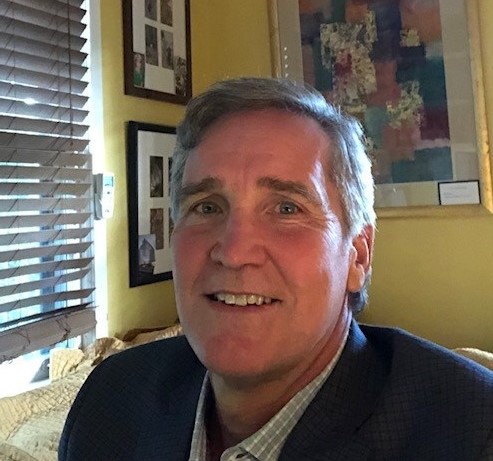North Carolinians can no longer stack underinsured motorist policies to compare to liability limits in order to boost the amount of coverage in an accident, the state Supreme Court said last week in a decision that overturns 30 years of appeals court rulings.
“There’s no doubt this is a significant ruling,” said William Lipscomb, attorney for North Carolina Farm Bureau Mutual Insurance Co., which prevailed in the case. “It drastically changes things back to the way the legislature drew it up.”
The state’s UIM law is clear, the high court said in the decision. “The only UIM limits that may be considered at the activation stage are those ‘for the vehicle involved in the accident and insured under the owner’s policy,'” the court said in overturning a 2022 appeals court decision in the case.
North Carolina law notes that a claimant’s underinsured coverage must be “activated” for his or her claim to proceed. And insureds must show that the at-fault vehicle’s liability limits are less than the claimant’s UIM coverage.
 The appellate court had erred when it permitted motorist Matthew Bryan Hebert to “stack and compare” at the activation stage, adding his parents’ UIM policy to his own. The appeals court should not have allowed him to “aggregate inter-policy all of the UIM policies available to defendant, regardless of their connection to the car involved in the accident, before comparing his UIM limits to the at-fault vehicle’s liability limits,” the high court justices said.
The appellate court had erred when it permitted motorist Matthew Bryan Hebert to “stack and compare” at the activation stage, adding his parents’ UIM policy to his own. The appeals court should not have allowed him to “aggregate inter-policy all of the UIM policies available to defendant, regardless of their connection to the car involved in the accident, before comparing his UIM limits to the at-fault vehicle’s liability limits,” the high court justices said.
The trial court in Wake County must now enter a judgment in favor of Farm Bureau, declaring that Hebert was not due the extra coverage, effectively ending the litigation, the Supreme Court said.
The case was complicated somewhat by the fact that Hebert was a passenger in his own car when the collision occurred. His 2004 Chevrolet Malibu was both the at-fault vehicle and the vehicle through which Hebert, as an injured party, sought UIM recovery.
That’s not an unusual situation, Lipscomb said.
“When there are injured passengers in a single-vehicle accident, it’s pretty common,” he said.
Hebert also had acknowledged in the litigation that his parent’s policy covered only him, not his car, a key distinction in the statute.
In 2020, Hebert was riding with two other people in his Malibu. Sincere Terrell Corbett was driving. The car collided with a car owned by William Coats, the court explained. Corbett and a passenger in Hebert’s car, Jamar Hicks, were killed. Hebert and another passenger, Chase Hawley, along with Coats, the other driver, were seriously injured.
All agreed that Corbett was at fault. Farm Bureau paid the $100,000 per-accident limit under Hebert’s liability policy and the four claimants and their estates agreed to divide the payout. Some $49,500 went to Hicks’ estate; $49,500 to Hawley; $900 to Coats; and $100 to Hebert.
Farm Bureau also paid $99,900 in UIM coverage under Hebert’s parents’ policy. Several months later, Farm Bureau asked the Wake County judge to declare that Hebert’s additional claim of UIM coverage under his own policy was not available: Hebert’s liability policy limits were equal to its UIM coverage, thus barring any further underinsured recovery, the insurer argued.
The Wake County trial judge disagreed, and the North Carolina Court of Appeals upheld the trial judge. A dissent by one appellate judge, however, sided with Farm Bureau on this particular type of claim, despite decades of stacking practice in the state.
The Supreme Court’s opinion agreed with that dissent. The justices pointed out that for some 30 years, courts have allowed stacking of policies to help protect victims of auto accidents. But the opinion, written by Chief Justice Paul Newby, said the Court of Appeals had been misinterpreting the N.C. Motor Vehicle Safety and Financial Responsibility Act of 1953.
In the appellate court’s view, the limits referred to in the statute were all of the UIM limits available to the claimant, Newby explained.
“This interpretation, however, ignores the remainder of subdivision 20-279.21(b)(4)’s first paragraph. In the sentences immediately surrounding subdivision 20-279.21(b)(4)’s definitions of underinsured highway vehicle, ‘limits’ appears thirteen times. In each of those instances, the statute refers to the per-person and per-accident limits under a singular policy, not limits from multiple policies.”
The statute appears to allow inter-policy stacking, but only in the later, “calculation” stage of a claim, not at the initial activation stage, the justices wrote. Also, the statutory language on the activation is concerned with the claimant’s UIM policies for the vehicle, not all UIM policies for which the insured is eligible.
“In other words, if an insured’s UIM policy is not ‘for’ the vehicle involved in the accident and insured under the owner’s policy, it is outside the scope of consideration when determining whether the at-fault vehicle is an underinsured highway vehicle,” the Supreme Court noted.
Thus, the sum of Hebert’s liability policy limits is not less than the UIM limits and the Malibu does not meet the definition of an underinsured vehicle.
The case was watched by the plaintiff and defense bars. In an amicus brief, the North Carolina Advocates for Justice, a trial attorney association, said that Farm Bureau’s argument was another example of an insurer “seeking to undermine UIM coverage that has been in place for years.”
By allowing the $100 to Hebert from his liability policy, Farm Bureau negated an additional $50,000 in additional UIM coverage, a policy Hebert had paid premiums on. That shortchanges the insured, attorneys Jon Ward, Paul Coates and Douglas Maynard Jr. wrote in the brief. The statute is clear and has not been misinterpreted by appeals courts, they said.
“If the fundamental structure of UIM benefits is to shift in North Carolina, that change should come from the legislature,” the brief noted.
In January, change is coming from the legislature. Under a 2023 law that takes effect in 2025, insurers and insureds must compare the amount of liability coverage to the damages suffered by victims of an accident, instead of comparing liability coverage to underinsured coverage for vehicles.
“It will be a dramatically different equation,” said Lipscomb, the Farm Bureau attorney, who is retiring from practice this week.
Related: South Carolina High Court in 2022 Said Stacking Allowed
Topics North Carolina Liability
Was this article valuable?
Here are more articles you may enjoy.



 Berkshire Hathaway Raises New CEO Abel’s Salary to $25 Million
Berkshire Hathaway Raises New CEO Abel’s Salary to $25 Million  Private Equity Firms Expected to Unleash Middle-Market M&A Deals, Survey Says
Private Equity Firms Expected to Unleash Middle-Market M&A Deals, Survey Says  10 Highest Class-Action Settlements in 2025 Eclipsed $70B Total: Duane Morris
10 Highest Class-Action Settlements in 2025 Eclipsed $70B Total: Duane Morris  Howden Buys M&A Insurance Broker Atlantic Group in US Expansion
Howden Buys M&A Insurance Broker Atlantic Group in US Expansion 


